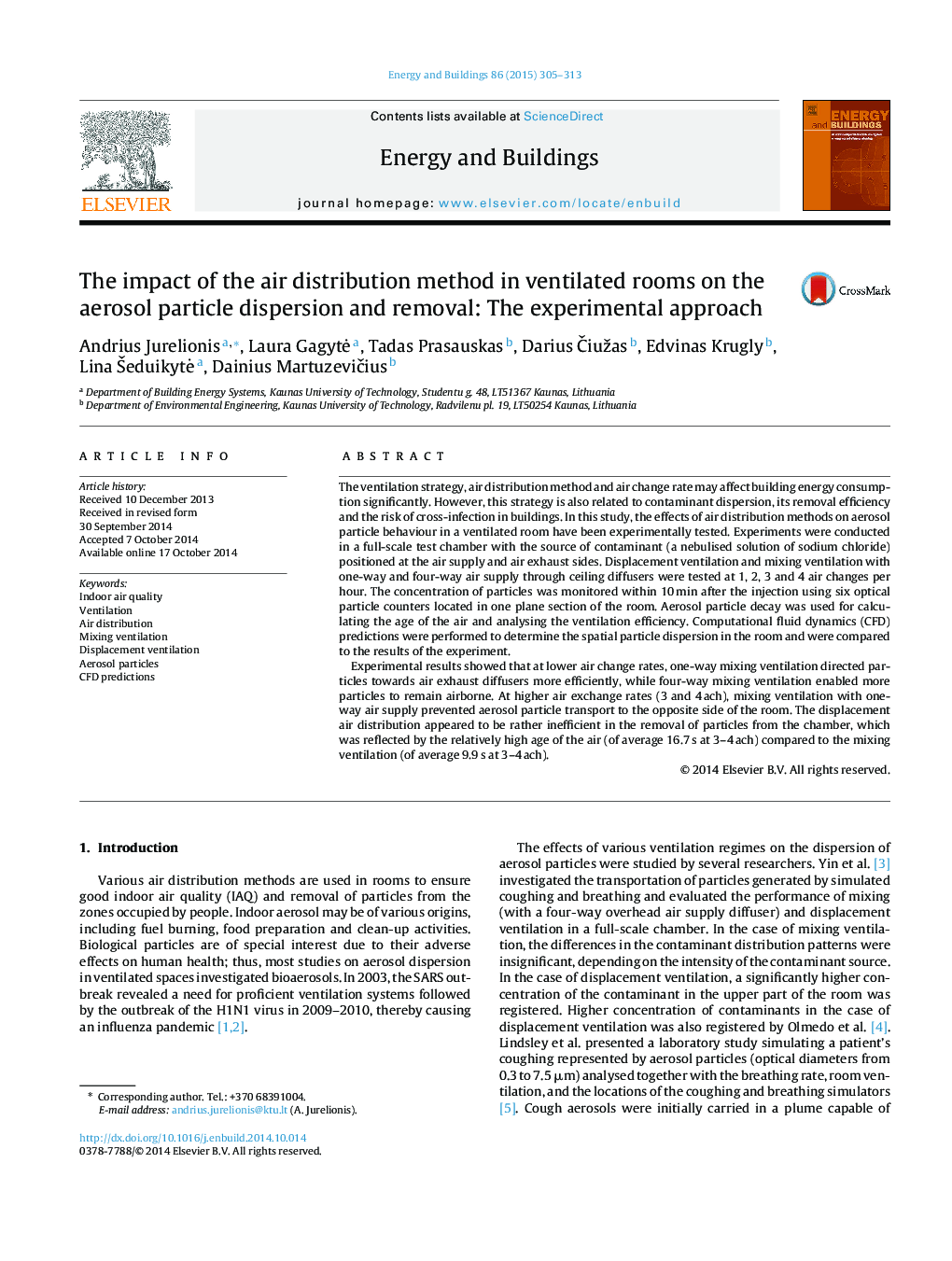| Article ID | Journal | Published Year | Pages | File Type |
|---|---|---|---|---|
| 6732767 | Energy and Buildings | 2015 | 9 Pages |
Abstract
Experimental results showed that at lower air change rates, one-way mixing ventilation directed particles towards air exhaust diffusers more efficiently, while four-way mixing ventilation enabled more particles to remain airborne. At higher air exchange rates (3 and 4Â ach), mixing ventilation with one-way air supply prevented aerosol particle transport to the opposite side of the room. The displacement air distribution appeared to be rather inefficient in the removal of particles from the chamber, which was reflected by the relatively high age of the air (of average 16.7Â s at 3-4Â ach) compared to the mixing ventilation (of average 9.9Â s at 3-4Â ach).
Keywords
Related Topics
Physical Sciences and Engineering
Energy
Renewable Energy, Sustainability and the Environment
Authors
Andrius Jurelionis, Laura GagytÄ, Tadas Prasauskas, Darius Äiužas, Edvinas Krugly, Lina Å eduikytÄ, Dainius MartuzeviÄius,
